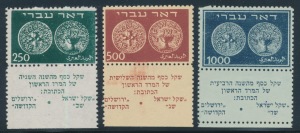Probably nine out of ten philatelic forgeries were created in the nineteenth century. There were three primary reasons for this. First, stamps that were issued in the earliest period (before there were many stamp collectors) never existed in sufficient quantities in even the limited market by 1890. Second, early philatelic standards did not view forgeries the way we do today. Many early collectors were glad to have a “reproduction”, or a “reprint,” as they were euphemistically called, in their collection when they couldn't afford the genuine. And third, the consolidation of the German and Italian States in the late nineteenth century into the great nation states of Germany and Italy left twenty or so stamp issuing entities (that had issued many rare stamps that collectors desired) without government agencies to police counterfeits of their stamps. The stamps had been demonetized, and so, from a government point of view, counterfeits were a nuisance, not a revenue drain.
Counterfeiters and stamp alterers, like most dishonest people, are very responsive to economic incentives and intuitively calculate risk/reward ratios. Counterfeits are very hard to make convincingly. Matching paper, plate, printing, perfs, and gum is a daunting technological and artistic task, and when new forgeries of the best stamps come on the market, the existence of more than a few of a rare item alerts experts to do even more rigorous examination of the stamps that are submitted to them. Nearly all new counterfeits are caught and taken off the market before they can ever get into a collector's album. So counterfeits are not where the real stamp fraud money has been for the last hundred years. Stamp fraud today is mainly about improving quality. In the pre-WWII period this meant repairing thins and creases. Since the war it has largely meant improving gum (regumming hinged stamps to appear Never Hinged) and putting cancellations on better British and European hinged mint sets to make them more salable as used sets. This has a far better risk/reward ratio for crooks. Governments are far less interested in prosecuting this kind of fraud as it doesn't deprive the government of revenue, as counterfeiting does. And a regumming job is a technological snap compared to making a stamp from scratch and can mean hundreds, if not thousands, of dollars per stamp.
But there have been some forgeries since WWII that are dangerous, and it is just because modern forgeries are so unusual that they have such a capacity to fool us. Pictured above is a set of forgeries of the first issue of Israel tabs. Most of the forgeries of this rare set (they catalog over $5,000) are sets of singles with the tab reattached. This set is a forgery from the start and can be told by the weakness of the stamp impression (as the forgery was produced by photolithography). This set is one of only a handful of dangerous modern forgeries.

